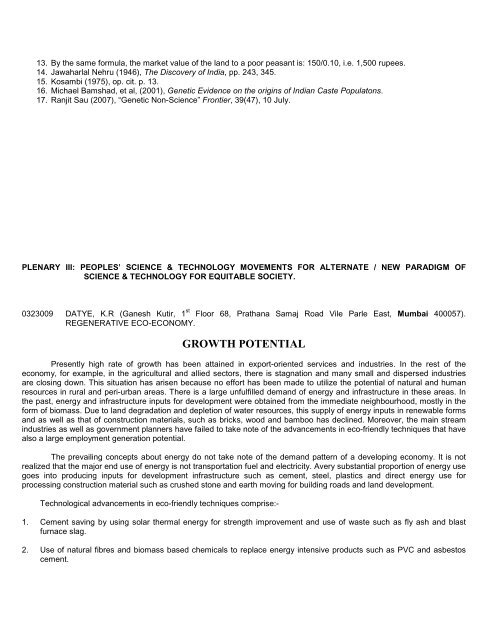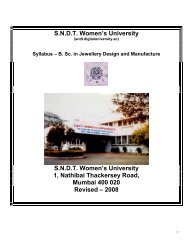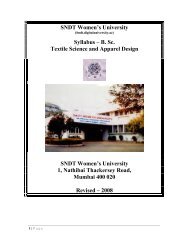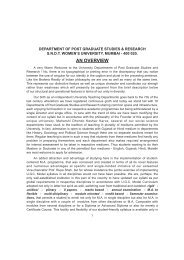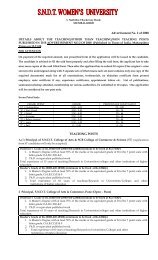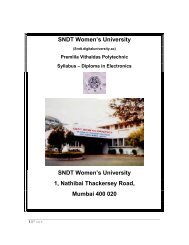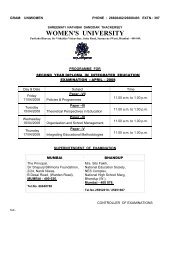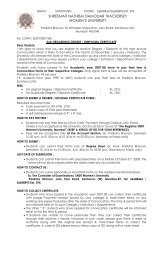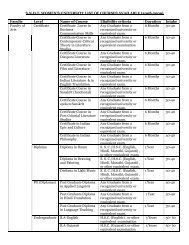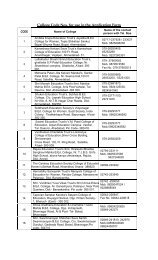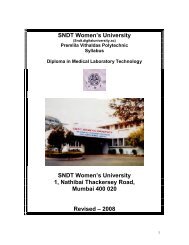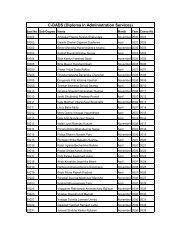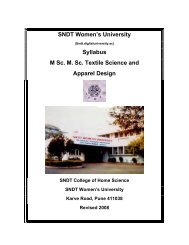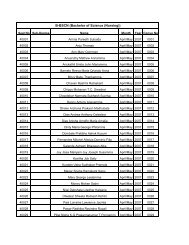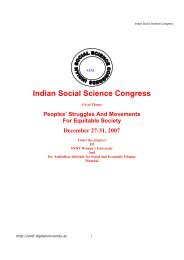XXXI Abstracts Part 1 page 1-189
XXXI Abstracts Part 1 page 1-189
XXXI Abstracts Part 1 page 1-189
Create successful ePaper yourself
Turn your PDF publications into a flip-book with our unique Google optimized e-Paper software.
13. By the same formula, the market value of the land to a poor peasant is: 150/0.10, i.e. 1,500 rupees.<br />
14. Jawaharlal Nehru (1946), The Discovery of India, pp. 243, 345.<br />
15. Kosambi (1975), op. cit. p. 13.<br />
16. Michael Bamshad, et al, (2001), Genetic Evidence on the origins of Indian Caste Populatons.<br />
17. Ranjit Sau (2007), “Genetic Non-Science” Frontier, 39(47), 10 July.<br />
PLENARY III: PEOPLES’ SCIENCE & TECHNOLOGY MOVEMENTS FOR ALTERNATE / NEW PARADIGM OF<br />
SCIENCE & TECHNOLOGY FOR EQUITABLE SOCIETY.<br />
0323009 DATYE, K.R (Ganesh Kutir, 1 st Floor 68, Prathana Samaj Road Vile Parle East, Mumbai 400057).<br />
REGENERATIVE ECO-ECONOMY.<br />
GROWTH POTENTIAL<br />
Presently high rate of growth has been attained in export-oriented services and industries. In the rest of the<br />
economy, for example, in the agricultural and allied sectors, there is stagnation and many small and dispersed industries<br />
are closing down. This situation has arisen because no effort has been made to utilize the potential of natural and human<br />
resources in rural and peri-urban areas. There is a large unfulfilled demand of energy and infrastructure in these areas. In<br />
the past, energy and infrastructure inputs for development were obtained from the immediate neighbourhood, mostly in the<br />
form of biomass. Due to land degradation and depletion of water resources, this supply of energy inputs in renewable forms<br />
and as well as that of construction materials, such as bricks, wood and bamboo has declined. Moreover, the main stream<br />
industries as well as government planners have failed to take note of the advancements in eco-friendly techniques that have<br />
also a large employment generation potential.<br />
The prevailing concepts about energy do not take note of the demand pattern of a developing economy. It is not<br />
realized that the major end use of energy is not transportation fuel and electricity. Avery substantial proportion of energy use<br />
goes into producing inputs for development infrastructure such as cement, steel, plastics and direct energy use for<br />
processing construction material such as crushed stone and earth moving for building roads and land development.<br />
Technological advancements in eco-friendly techniques comprise:-<br />
1. Cement saving by using solar thermal energy for strength improvement and use of waste such as fly ash and blast<br />
furnace slag.<br />
2. Use of natural fibres and biomass based chemicals to replace energy intensive products such as PVC and asbestos<br />
cement.


